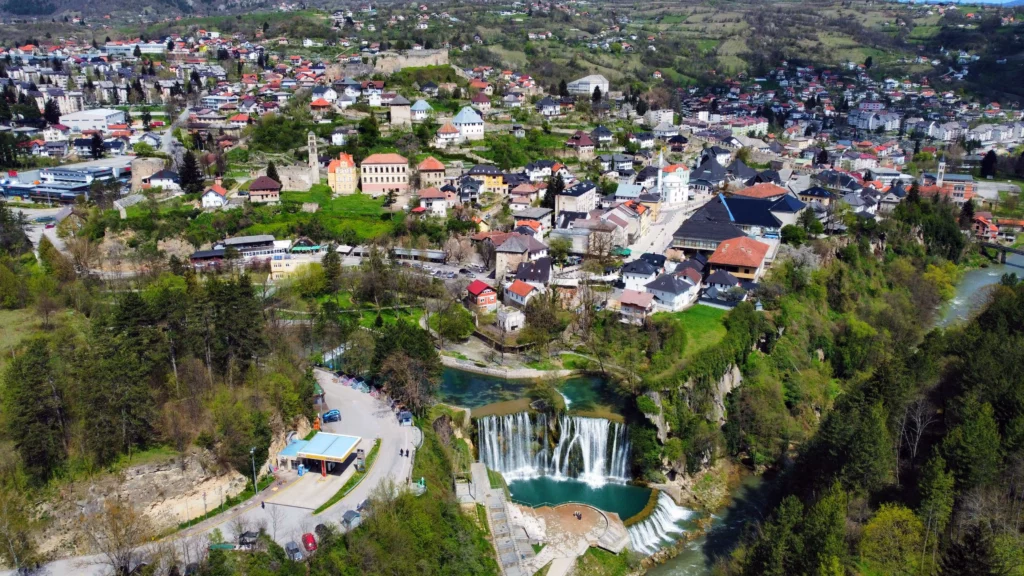How Bosnian-Americans found a home in the Midwest.

Armin Dogic knows what it’s like to feel far from home while laying in his own bed.
Although he was born and raised in Des Moines, Iowa, Dogic is of Bosnian blood, and was raised in Bosnian tradition—he hardly feels acquainted with American culture. He comes from a lineage where traditions are very important. He eats Bosnian food every day and listens to Balkan music in his car over English music.
“I do live [in] two cultures,” Dogic says. “When you go back home [to Bosnia], they’re going to see you as an American. But I feel more Bosnian than I do American.”
In 1998, Dogic’s parents came to the U.S. on the heels of the Bosnian war with nothing but the clothes on their backs. They were refugees assigned to Des Moines as their new home by the U.S. government with no say in the matter. They spoke no English and knew next to nothing about America. Therefore, it was important to them that their son would grow up attending English as a Second Language (ESL) classes, like many of his Bosnian classmates.
What got them through the transition was the sense of community with others in their position.
“They came here with nothing but white bags from immigration services and each other,” Dogic says. “With the community they all stuck together, and that’s why the Bosnians here are still successful today.”
Hundreds of these people were refugees of not just a war, but what the United Nations is declaring a genocide 25 years later.
The war and its impact
To the east of Italy across the Adriatic Sea and on the western border of Serbia lies Bosnia and Herzegovina. It’s a sovereign nation with a long history of disruption because it’s seen as a part of both eastern and western Europe. It’s been ruled by the Romans, Germanic tribes, the Austro-Hungarian empire, the Ottoman Empire, and was a part of Yugoslavia.
In 1992, Bosnia and Herzegovina declared its independence for the first time in history, but that didn’t stop foreigners from trying to wipe them out. Shortly thereafter, Serbia invaded and the Bosnian War began. The Serbian aggressors claimed to be crusaders of Christianity, while the Bosniaks were Bosnian Muslims.
Moren Blazevic was forced to flee his native country at the age of four due to the war.
“I know the stuff that they were doing wasn’t Christianity,” Blazevic says. “It was an act of Satan.”
Blazevic didn’t witness death and bloodshed, but he remembers the trauma that came with the situation. He was a refugee in Croatia and then immigrated to the U.S. And he, like many others, was separated from those he was closest with. His father dropped him off in Croatia, and then went back to fight.
“So my generation…we were living somewhere else and learning a different culture without some of our loved ones and without understanding why,” Blazevic says.
His dad eventually returned, and his family immigrated to the U.S. where they, like Dogic and many others, worked to integrate their native culture into the new land.
Building community in America
At the top of the Bosniak lane, a rural street near Granger, Iowa, named for the refugees, sits a real mosque and the Islamic and Cultural Center Bosniak of Des Moines. Its minaret, a tall and pointed structure that’s used to call Muslims to prayer, can be seen from miles away. The bronze dome overlooks rural Iowa, the first of its kind in the state. It’s not yet complete, but the Bosnian population is all the more closer to having a space that fits the amount of people trying to use it. For the past 20+ years, religious spaces were small rooms in strip malls. They were crowded and hard to worship in.
“There needs to be a place where a community can come together,” Dogic says. “The only time [Bosniaks] come together is at the mosque.”
Aside from it being a holy place, it’s special because it wasn’t built on credit or contracted out to some American construction company. It’s been built by the hands of the community members. Not just Bosnian immigrants, but those that Blazevic, the community center’s treasurer, calls his American-born neighbors. They are friends who practice Judaism, Buddhism, and even Christianity, despite Bosniak history with the religion. People from all walks of life have contributed.
“It’s important because tomorrow we can say that our community members built this,” Blazevic says, “…instead of getting some grant or some really rich person to pay for it.”
And that sense of community expands past the cultural center. Semir Ibisevic was born and raised in America. He visits Bosnia every other year. To him, sharing the Bosnian culture with the Americans he grew up with through building this cultural center has been one of the coolest experiences of his life.
“The way we’ve been able to connect with people from the Des Moines area,” Ibisevic says. “Bringing our food to work events, or teaching them a little bit of Bosnian.”
It’s no secret that America is a melting pot of cultures. When that’s embraced, America thrives, and that’s what the Bosnian community has come to know. The hand-built mosque is not yet completed, but the goal is to celebrate a full Ramadan in it next year.
